The content of the article
Currently, healthy eating has ceased to be a fashionable chip. More and more people are thinking about what falls on their plates on a daily basis. One of the areas of healthy food is the use of germinated grains, namely wheat. That's just not everyone knows how to do it right. Instead of nutritious and useful mass it turns out stinky unappetizing ferment.
How to germinate wheat at home? In principle, not so difficult. Observing several important conditions, you can significantly diversify your diet and get natural beneficial elements directly from the window sill, without leaving your home.
First you need to decide in which phase the germinated grain will be used. There are two options: whole or just greens. The principle of the initial germination in both cases is the same, but the terms and methods of use differ.
Choosing wheat
Once you have decided on the method of use, you must choose a grain. You can purchase it:
- On the market. The cheapest purchase. You can carefully consider the wheat, smell it. It does not guarantee that the grains did not undergo preplant treatment with chemicals. Where and how they were stored is also unknown. But there is no need to buy a large batch at once. You can buy a small handful and see what happens.
- In the shop. It turns out much more expensive. But then there will be a 100% certainty that the grains are unprocessed and can be safely eaten. By the way, also comes across with small debris and split seeds, which are no longer suitable for germination. Choose wheat in transparent bags so that the contents are clearly visible.
- In the Internet. We do not recommend. Buying a cat in a bag for big money. There is a high risk to get an absolutely unconditioned mix of incomprehensible production However, if there are good recommendations from friends who have already tried this purchase, then choose this option.
In general, devotees of healthy nutrition do not save on this very nutrition. Therefore, buy in stores.Or they have already secured support in personal subsidiary farms that plant wheat for themselves. It is cheaper and safer.
Cooking grain for germination
Yes, yes, preliminary training is always needed. You can not just push the wheat into the soil and wait for a miracle. We'll have to tinker a bit. The first thing is sifting grains. Remove visible debris, split and damaged seeds. Then they are placed in a shallow wide container and filled with plain clean water. Floated grains are removed, such wheat is unlikely to germinate.
Then the water with particles of small debris (it will definitely be) is gently drained over the edge, and poured fresh. Repeat until liquid becomes clear. Now you can fold the wheat in a sieve or colander.
Next will have to disinfect the pips, if they are purchased on the market. When buying in the store, you can skip this item. For this purpose, a weak solution of potassium permanganate is induced and wheat is poured over them for 12-14 minutes. After drained, thoroughly washed with clean water.
The seed preparation is completed by soaking. Without any kind of growth stimulant, the most ordinary pure water defused with wheat is poured so that the liquid level is 2 cm higher. They are set for 7-8 hours in a warm dark place.After this time, the kernels are ready for germination.
If the air temperature is too high at this time, you will have to change the water 2 times and wash the seeds. Otherwise, the probability of souring. Then all the works will go to ashes, it is impossible to eat sour wheat.
Eat whole wheat
After all procedures, the prepared seeds are spread in an even thin layer in a container. They can be glass, plastic, ceramic, enameled. Only not aluminum or cardboard. Putting nothing on the bottom is enough to make a few holes for draining excess liquid.
The resulting structure, together with the grains, is slightly moistened with an atomizer, then covered with any kind of material at hand. This may be white paper, several layers of newspapers, cotton cloth or plain gauze. Shelter, too, slightly sprayed with water. Now all this should be put in a warm and bright place.
Usually, wheat begins to germinate within a day. Hard varieties wake up a little longer, but not more than 2 days. If nothing happened by this time, then something was done wrong or substandard seeds were caught.
During the day, you should periodically open the container and sniff the contents.The smell should be specific, but pleasant. If there is a weak sour aroma or smell of mold, then immediately washed the grain with clean water to avoid damage or poisoning.
When done correctly, tiny sprouts appear after 20-24 hours. Upon reaching a length of no more than 2 mm, they can be safely eaten with grains. For example, eat whole or add to porridge.
As soon as the seedlings become more than 3 mm, they can no longer be eaten. But throwing is also not worth it. We proceed to the next stage.
Eat greens
What to do if you did not have time to eat all the germinated grains? Here are two options. You can keep them in the refrigerator, but not more than a day. Or sow them to get at least nutritious greens, rich in nutrients and vitamins.
For this you can use soil, sawdust, or just a few layers of paper. At the bottom of the tank for sowing poured the ground or sawdust with a layer of at least 1 cm. Or laid loose paper. It can be toilet or kitchen towels. Smooth or newsprint will not work.
Now we need to thoroughly moisten the whole thing.Only without fanaticism, the grains should not float in the water. Sprouted wheat laid out in a thin layer on a substrate. If sawdust or soil is used, then no more than 0.5 cm is sprinkled on top of them by itself. In the case of paper, wheat is not sprinkled on top.
Now you need to cover the entire structure with plastic wrap, clear plastic or glass. Next, put it in a warm and dark place. Once a day landing need to be aired. Shoots usually appear on the third day. As soon as the first eyelets sprout out, it is necessary to remove the shelter and rearrange the container with wheat in a bright place.
Then shoots begin to grow rapidly. And after 8-9 days you can cut the first greens. Do it with scissors. After cutting, the seedlings are again carefully moistened and left to grow. In a few days they will grow up and it will be possible to take them again for their needs.
Typically, such young greens are used to make salads, as part of a smoothie, or as a dressing for main dishes.
Cut greens grown in the soil can be up to 4 times. On sawdust - 3 times. On paper - no more than 2 times. No, wheat continues to grow further, only it does not carry any nutritional and vitamin value.
The most optimal length of sprouts for eating is 12-14 cm.If it is less, it does not have time to collect the necessary proportion of vitamins. If it outgrows more, it will quickly harden and chew it will have a long and hard.
Some useful tips
- They never ask the seller about the shelf life of wheat if they intend to purchase it on the market. He can slander anything. To the extent that the harvest is over this morning and the wheat is the freshest. Oriented to color and smell. The grains smell almost nothing, the color is dark beige or golden. Everything else is from the evil one.
- In order to eat sprouted grains, not greens, every day, you will have to use the stream method. In order not to get entangled in an infinite number of containers and not to overlook the growth, simply each vessel is signed. Enough date and time bookmarks.
- How much wheat to sprout? The recommended daily dosage per person - 2 tbsp. l From this volume and count. You can eat more, it does not harm. Less is also possible, but impractical because the benefits are too small.
- There are recommendations to germinate wheat directly in a glass jar, sprinkling it in a sufficiently thick layer.We do not recommend to do so. Because the bottom layer of grains suffocates from lack of oxygen. And the germination rate of the layers will be very different.
- For the same reason, you can not pour the seeds in the tank in more than two layers. It is better to put two vessels, but to scatter wheat thinly, than to separate already sprouted grains from those that have not yet spiked.
- Some sources claim that if a sooty film appears on the surface of the liquid when soaking the grains, this is a sign of treatment with pesticides. This is only partly true. Turbid film may appear in the case, if the water itself is poor quality with impurities of chlorine or hard. Poorly washed wheat also causes turbidity.
- Another recommendation: sprout wheat in the fridge. This will help to avoid damage and mold. Doubtful advice. First, the term of germination in the refrigerator is almost three times higher than in a warm place. Secondly, if you do not wash the grains, they will mold and deteriorate even in the most sophisticated refrigerator.
- The benefits of sap green sprouts or germinated seeds is great. Just do not abuse it.Only 30 g of liquid (milk) per person is enough per day.
- Periodically it is required to spray planting wheat on green with distilled water. If you simply cut off the seedlings and do not moisten them, then they will slow down their growth and soon wither.
How to germinate wheat at home? Totally easy. Wide capacity, clean water and grains - that's all that is needed to get valuable vitamin greens or tasty healthy grains.
Video: how to germinate grain


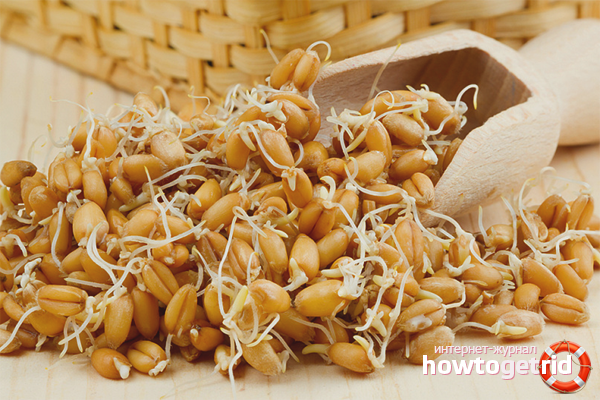



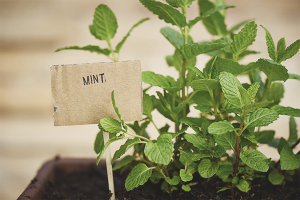
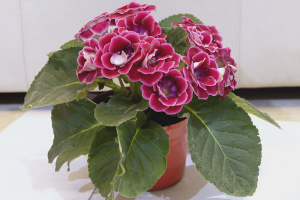
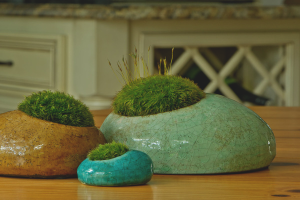
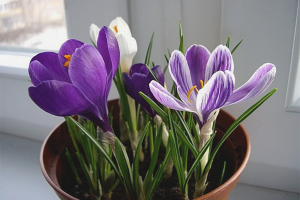
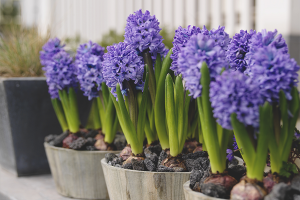
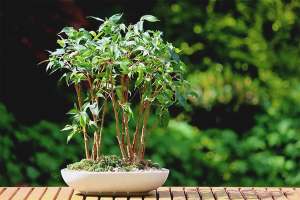
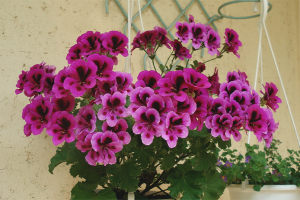
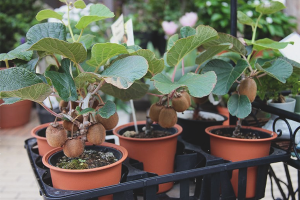
To send